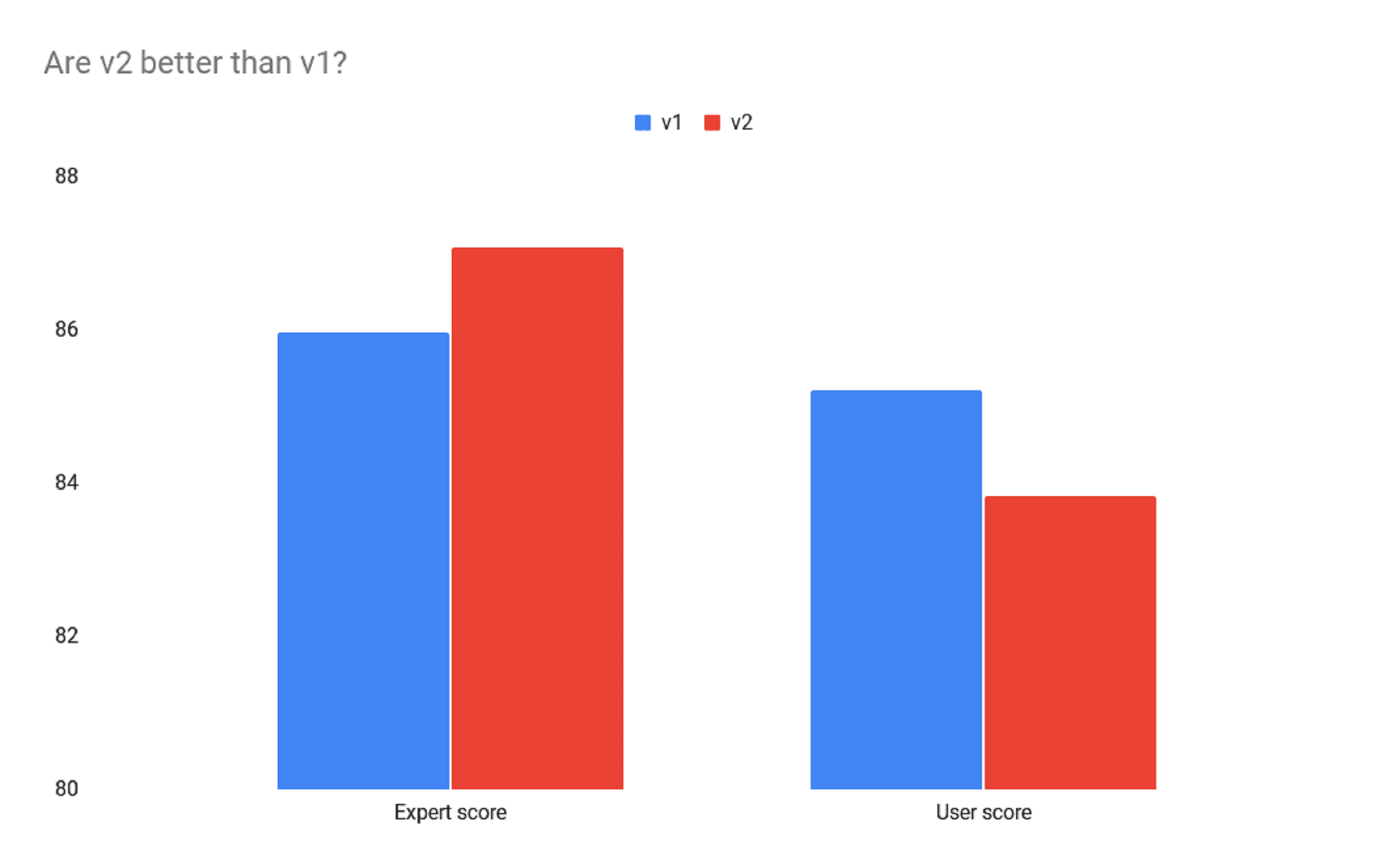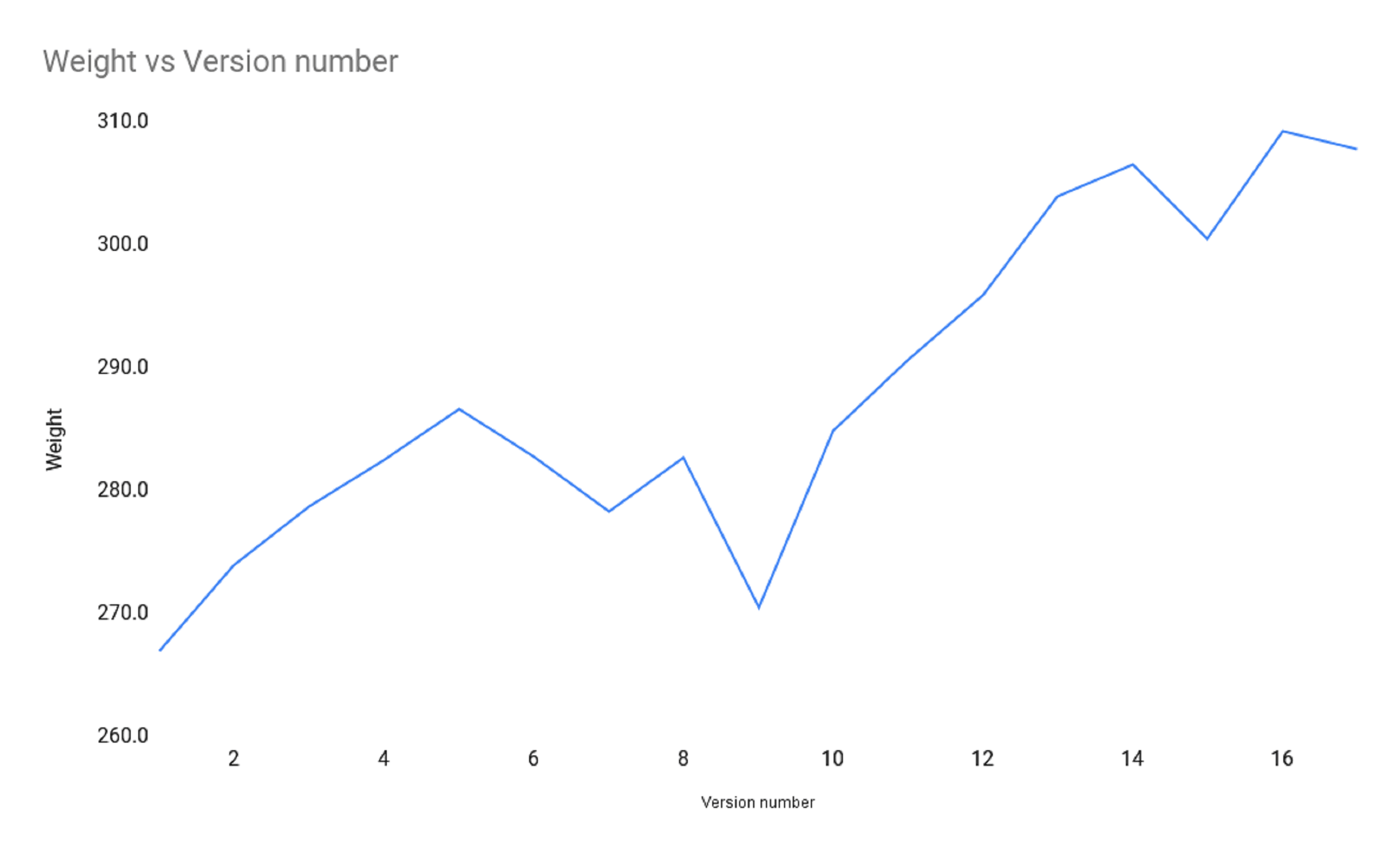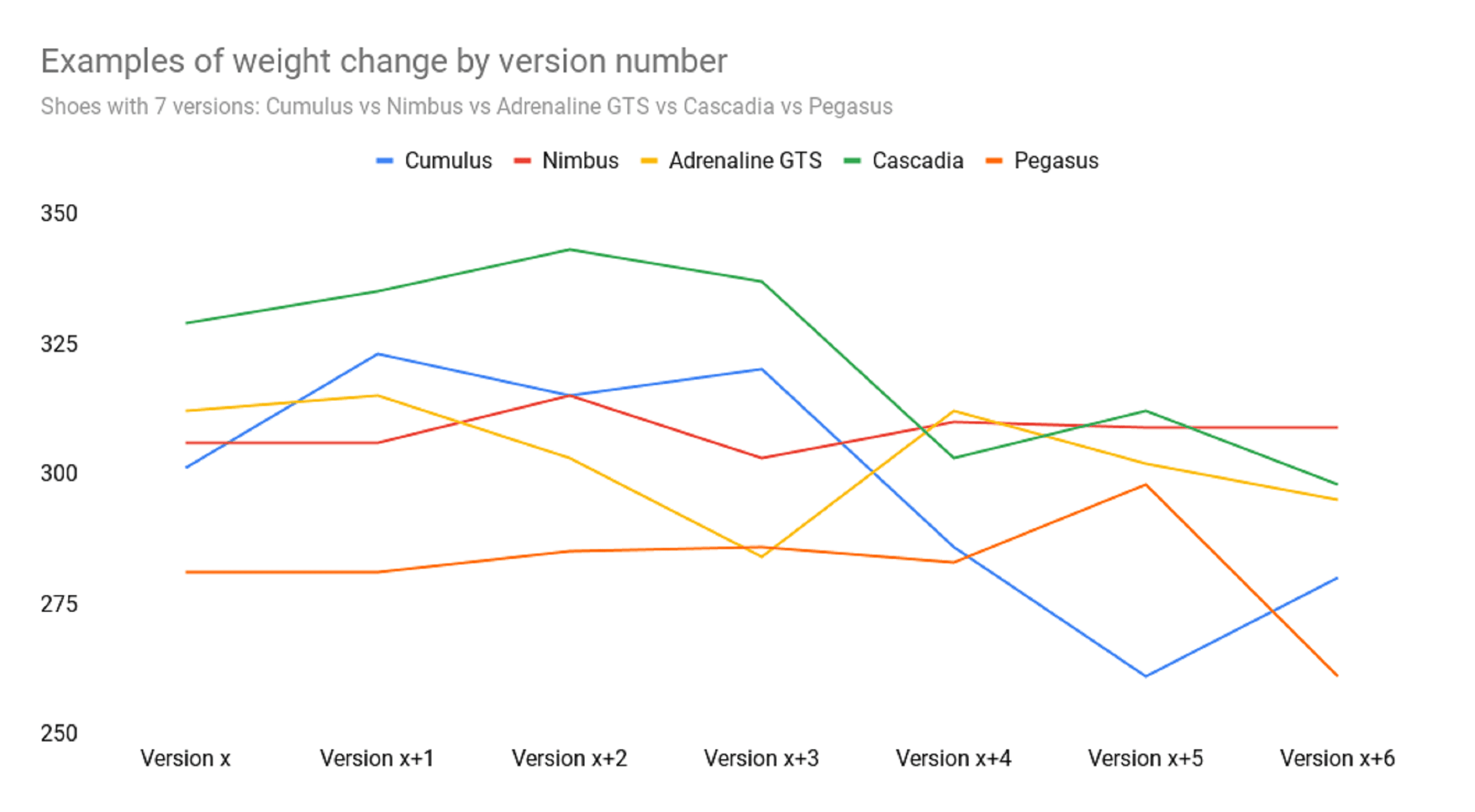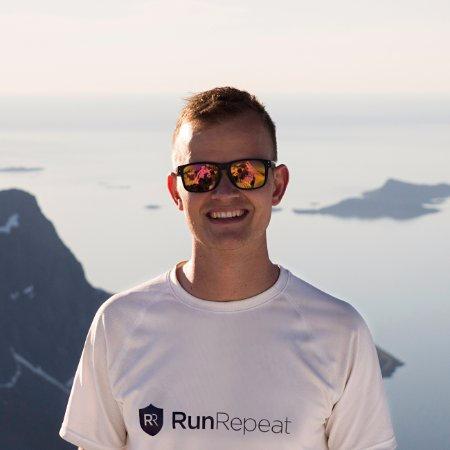Are new versions of running shoes even better?
Are new versions better or worse? Should you upgrade to the newest version which is typically more expensive? Let’s find out.
The Reddit group r/RunningShoeGeeks helped come up with this idea. Check out their group if you’re geeky about shoes.
The analysis is based on our database of about 2000 running shoes released in the last 7 years from 2015 to 2021.
Limitations and disclaimer
We don’t publish every single shoe on RunRepeat. Some are so rare that only a tiny number of people are interested in them.
For the analysis, I have excluded special versions of shoes as that would bias results. I understand the need for Goretex shoes, but all of those weird variation names are confusing to most people unless you know the brand. Examples: DNA, RSM, Twist, LE, MX, SP, Platinum, E-Mesh, Rise, Flyease, New Core, Lace, MT. Also, they don’t apply to this analysis, as an “E-Mesh” might be only in version 20 of a shoe and not in the previous ones.
Most running shoes die early
Darwinism hits hard when it comes to running shoe versions. It’s brutal.
For every 100 new running shoes released, only 43% make it to the 2nd version. Only 16% make it to a 3rd version. When we get to the 10th version, only 4% are left. It follows an exponentially decaying function.

Note how if a shoe makes it to version 15, it is likely to stick around until ~23 before the next dip. Obviously, this is a small sample, so it’s better to look at the general trend.
To me, this gives me a hint that new shoes are often hype and if one can resist and isn’t drawn by the new new thing, then it’s better to wait and see if there will even be a version 2 or 3 of the shoe, and then go get them.
It makes me appreciate the old dinosaurs that still live. To me, these are endangered species, and we should treat them with respect. They’ve seen stuff.
- Nike Air Zoom Pegasus 38
- ASICS Gel Kayano 28
- ASICS Gel DS Trainer 26
- Mizuno Wave Rider 25
- Nike Air Zoom Structure 24
- ASICS Gel Cumulus 23
- Saucony Hurricane 23
- ASICS Gel Nimbus 23
- Brooks Adrenaline GTS 21
- Mizuno Wave Creation 21
- Brooks Ariel 20
- Saucony Omni 20
Of the 2000 shoes in our database, we have 431 unique models in the last 7 years. Of those only 12 have made it to 20 or above. This is 2.8%. However, the percentage will be much smaller, because in the year 2010 for example, a lot of shoes also died out along the way, which we do not have in this analysis. A guestimate following the exponentially decaying function seen below is that
Are new versions better?
My logic would say that v2 would be better in most cases and from there it would just get better and better. To analyse this, I looked at how users and experts have rated different versions of the same model. I looked only at models that had both versions that are compared. This left me with 372 shoes.
Apparently, there’s doubt. Experts think v2 is generally better than v1, but users think the opposite and rate v2 1.62% lower than v1.

Is weight, drop and stack heights different?
Indeed they are.
- Version 2 is on average 6.77g heavier (0.24oz). That’s quite a lot!
- Version 2 has 0.21mm higher drop than v1. From 7.67mm to 7.88mm.
- Version 2 has a 0.58cm higher heel stack height (2.18%).
Conclusion: New versions get bigger and heavier.
|
Version 1 |
Version 2 |
Difference |
Diff% |
|
|
Expert score |
85.96 |
87.08 |
1.12 |
1.30% |
|
User score |
85.21 |
83.83 |
-1.38 |
-1.62% |
|
Weight (g) |
266.2 |
273.0 |
6.77 |
2.54% |
|
Drop (mm) |
7.67 |
7.88 |
0.21 |
2.74% |
|
Heel height |
26.62 |
27.20 |
0.58 |
2.18% |
How does weight, drop, and heel height change with version numbers?
Disclaimer: this looks at the current versions available on the market, and there’s a bias that older versions have been on the market longer and might have a tendency to stay closer to how they were originally designed.
The trend is clear. Shoes get heavier, drops increase, and stack heights increase as there are more versions added to a shoe line.

Drop gets higher

And stack heights get higher

How do user ratings change long term with version numbers?
Generally, shoes with higher version numbers get better reviews from users

This is however biased by the fact that shoes that stick around longer might already be liked well by users, so when ASICS launched Kayano 15, 16, 17, 18, the series is already liked and that’s why the Kayano 28 also receives positive feedback.
How weight changes from model to model with specific cases
I had a look at models for which we have data for 8 versions or more. I picked the Kayano, Glycerin and the Mizuno Rider. There seems to be nothing interesting with weight really. When I watch expert reviews, I often hear comments on weight “it got a little lighter” and I’ve always thought that shoes were constantly getting lighter, but to me, it seems like it’s just fluctuating, really.

I also looked at shoes with 7 versions available, and the trend is the same. Some shoes, like the Cumulus seems to have dropped a lot of weight recently and same for Brooks Cascadia, but generally, weights are consistent.

I didn’t bother to plot drop, as it’s super boring. Only 2 of 12 shoes with at least 5 versions available changed drop. It was the Cascadia that dropped from 10mm to 8mm and the ASICS DS Trainer that also went from 10mm to 8mm.
